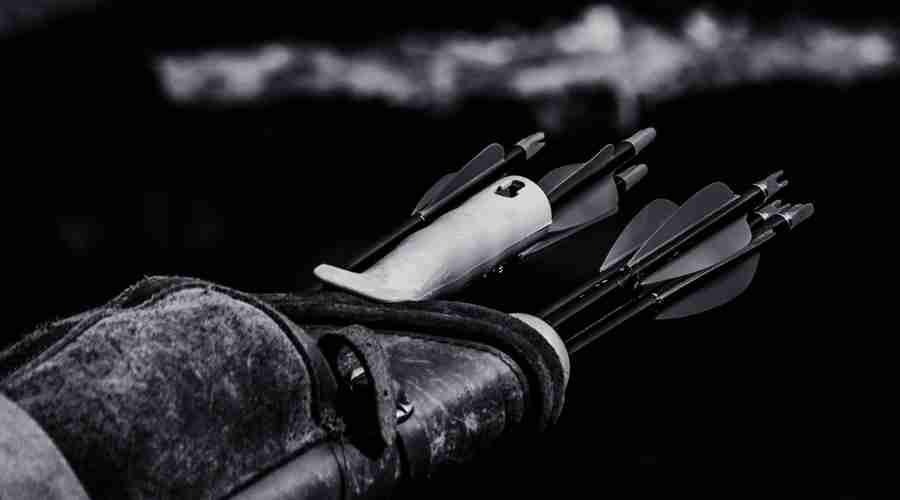What makes a bow quiver dependable? And why is this so crucial in your archery journey? These questions might be swirling in your mind as you hold your bow, ready to aim.
Let’s explore the key features that elevate a simple bow quiver to an indispensable part of your archery arsenal and why you should care.
Let´s get started
Contents (Jump to Topic)
ToggleUnderstanding Bow Quiver Durability
So, what makes a bow quiver durable? Let’s dissect it.
When evaluating bow quiver durability, you must consider several key features.
read.. best compound bow quiver
The material is pivotal. Whether it’s wood, leather, metal, nylon, or high-density plastic, the material used can significantly influence the durability of a bow quiver.
Seek a quiver made of sturdy, high-quality materials to ensure it can endure regular use and weather exposure.
Construction is another vital factor. A durable bow quiver should feature sturdy stitching, reinforced seams, and robust attachments.
Also, you want a quiet quiver – No clanging of arrows, no rattling, etc.
These elements will help your quiver withstand the tests of regular use and harsh outdoor conditions.
Consider also the quiver’s impact resistance. A durable bow quiver will safeguard your arrows and broadheads from impact, keeping them secure during movement.
Don’t overlook weather resistance. A weatherproof quiver will shield your arrows from moisture, rain, and extreme temperatures, enhancing its durability.
read.. the different types of bow quivers
Essential Bow Quiver Features
Now, let’s delve into the essential features of a durable bow quiver, which are critical for efficient arrow storage, quick reloading, and compatibility with your shooting style and arrow needs.
A key feature of a durable bow quiver is a secure arrow gripper.
This feature ensures your arrows remain in place, even during vigorous movement.
Next, consider the hood of your arrow quiver. It should be deep and foam-lined, offering robust broadhead protection.
This feature safeguards your arrows and ensures you don’t accidentally injure yourself.
Thirdly, your bow quiver needs an easy attachment and removal mechanism.
Quality quivers usually use a lock pin for a stable connection. This feature lets you quickly attach or remove the quiver from your bow, making it highly convenient.
Furthermore, another essential bow quiver feature is a mount that minimizes noise and vibration.
It contributes to stealth, a crucial aspect of bow hunting.
Lastly, your quiver should be lightweight and adjustable. A durable bow quiver perfectly balances functionality and comfort.
Selecting the Right Bow Quiver
Choosing the right bow quiver involves careful consideration of various styles like:
- back quiver
- hip quiver
- field quiver
- detachable quiver
- bow-mounted quivers
There’s no right or wrong choice; it’s all about what works best for you.
When selecting the right bow quiver, consider factors such as your shooting style, the number of arrows you need to carry, and the length of your arrows.
For instance, if you’re the type of archer who prefers quick access to arrows, a back quiver may be perfect for you.
However, be aware of its limitations – it might not be practical if you are hunting from a ground blind.
On the other hand, if you value convenience and grip point versatility, a bow-mounted quiver could be your best bet.
Ensure you get used to how this will influence bow balance, etc.
The key features of a durable bow quiver are:
A secure arrow gripper, a deep and foam-lined hood for broadhead protection, easy attachment and removal, a strong and secure attachment mechanism, noise and vibration reduction, lightweight design, and adjustability.
And obviously personal preferences and what you are up to. Bowhunters most definitely have different needs than target archers.
Innovations in Quiver Design
While considering the key features of a durable bow quiver and how they align with your needs, it’s worth exploring the latest innovations in quiver design that are pushing the boundaries of convenience, customization, and performance.
Modern quivers come in various styles, each aimed at enhancing your experience.
One significant development is the adjustable features that offer a customized fit and balance.
This innovation eliminates extra weight, reducing bow torque and improving accuracy.
Moreover, you’ll find that quivers now accommodate different arrow types, including those with longer and wider broadheads.
This versatility is a testament to the thoughtful innovations in quiver design, ensuring no arrow type is left behind.
New materials and construction methods have also emerged, making quivers lighter and more compact.
These designs are particularly beneficial for specific hunting applications, like treestand hunting, where space and weight are at a premium.
Additionally, these materials reduce vibration, ensuring a steady shot every time.
These advancements in quiver design reflect a commitment to enhancing your hunting prowess by providing convenience, customization, and top-notch performance.
Sources:
https://legendarchery.com/blogs/archery-bowhunting-blog/quiver-options-the-best-styles-for-professional-archers
https://www.3riversarchery.com/blog/how-to-choose-best-arrow-quiver/
https://www.tightspotquiver.com/products
https://www.beararchery.com/products/bear-archery-leather-kodiak-quiver
https://www.bowhuntingmag.com/editorial/field-tested-alpine-archery-quivers/395280






